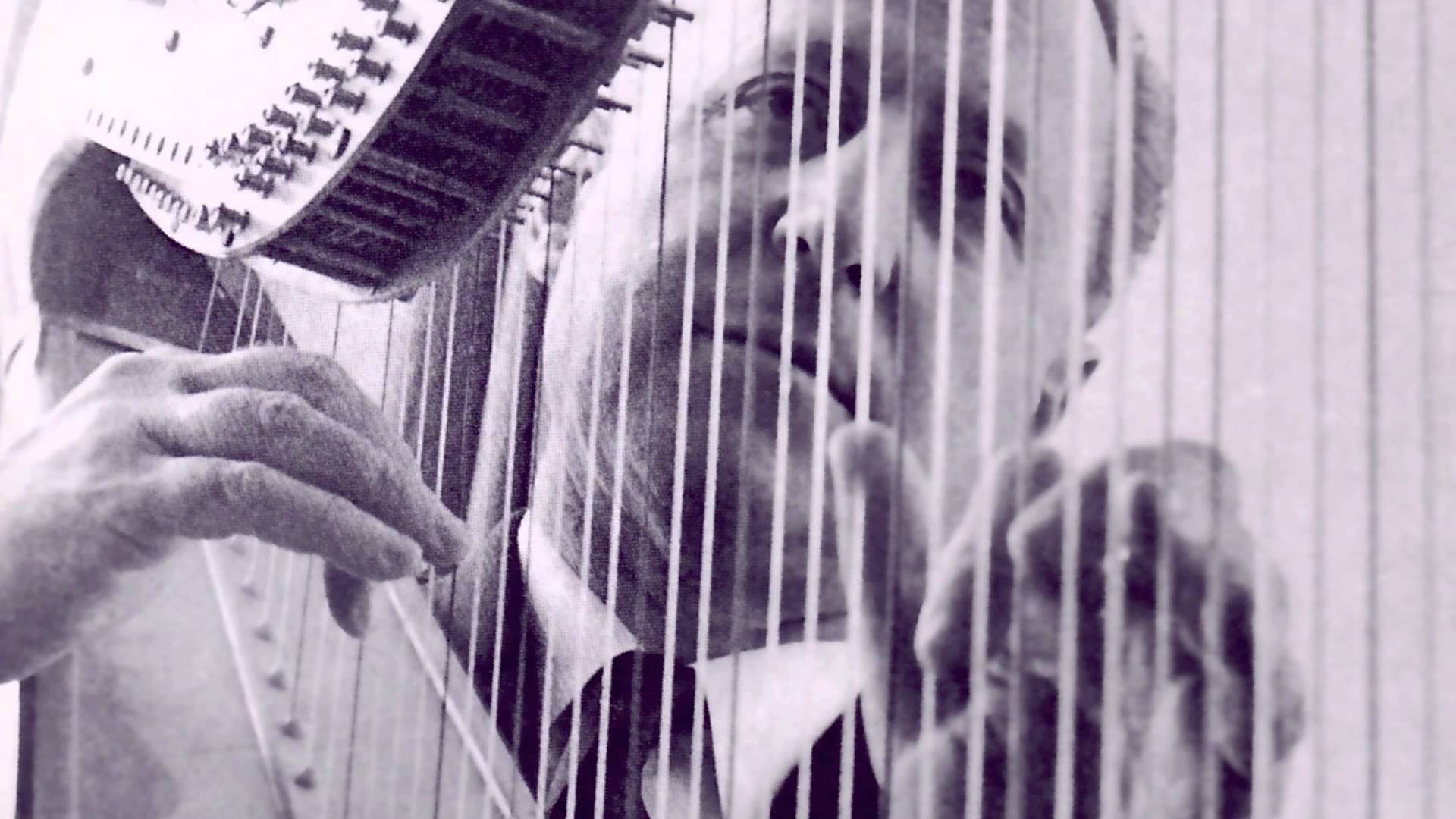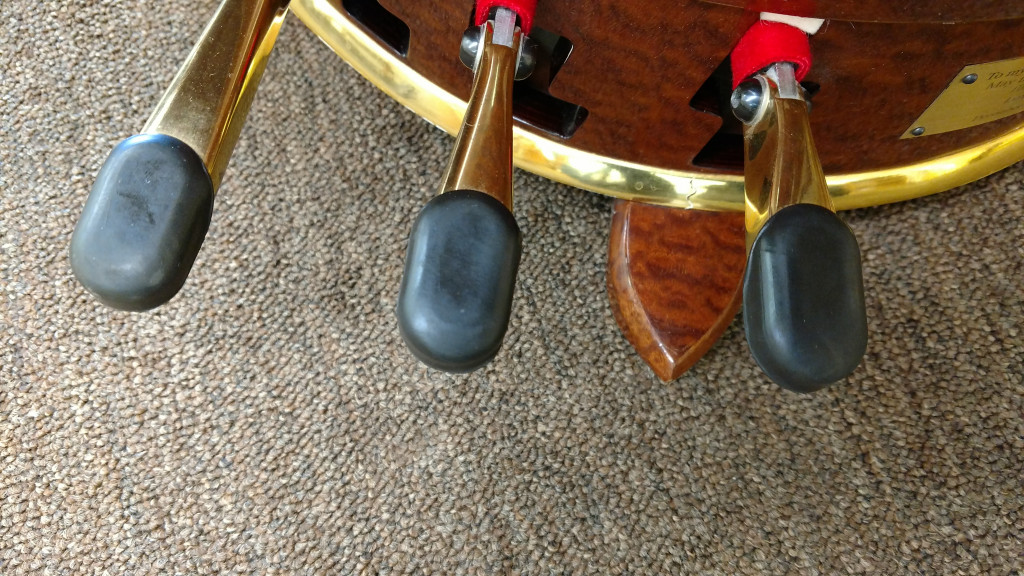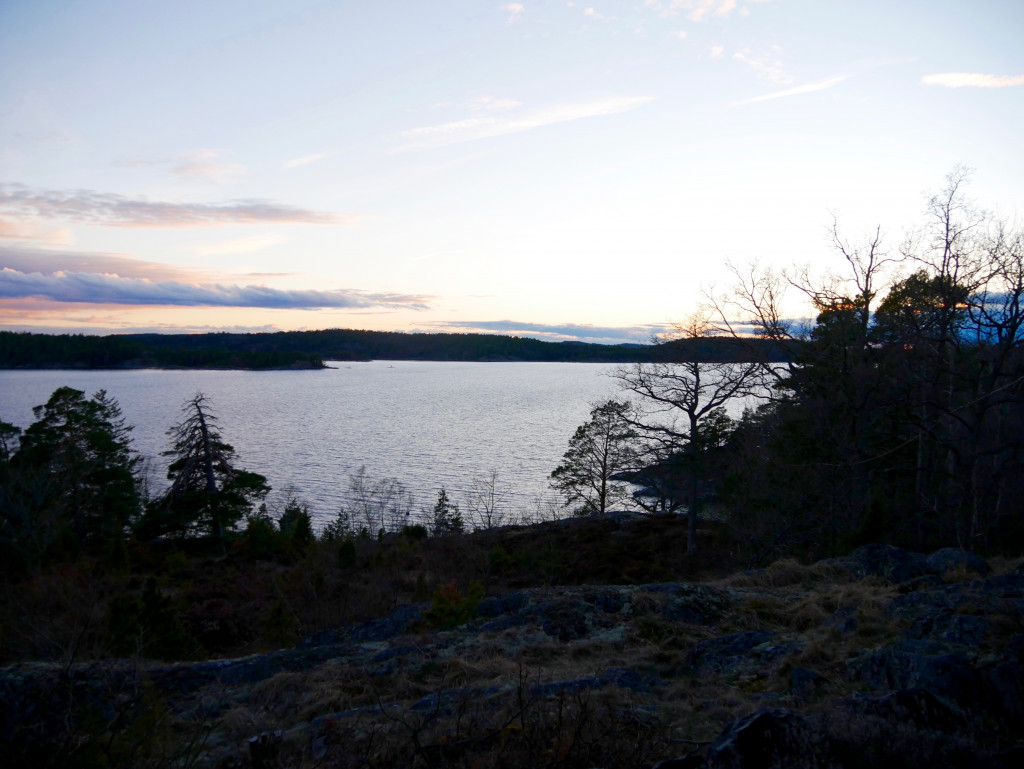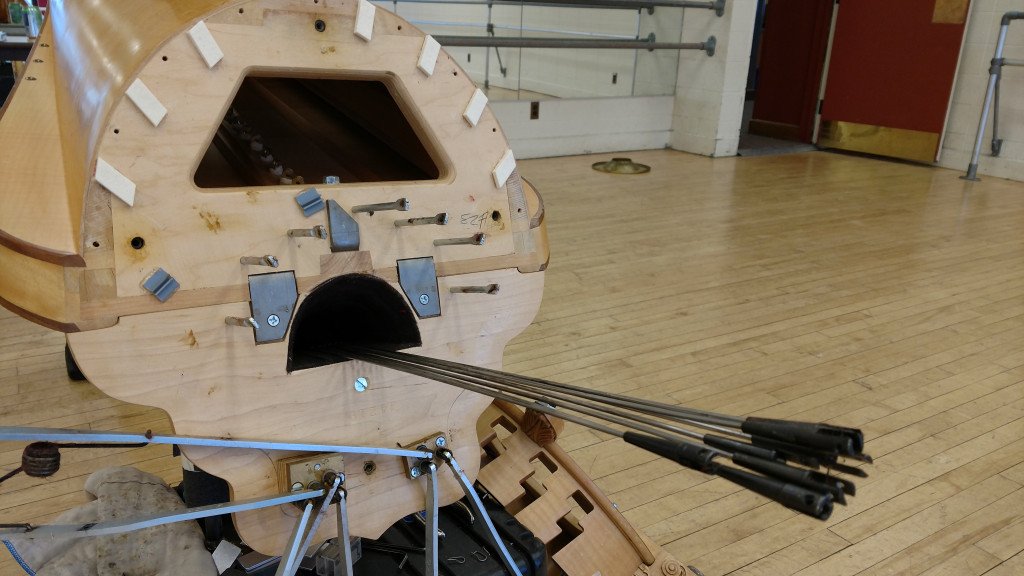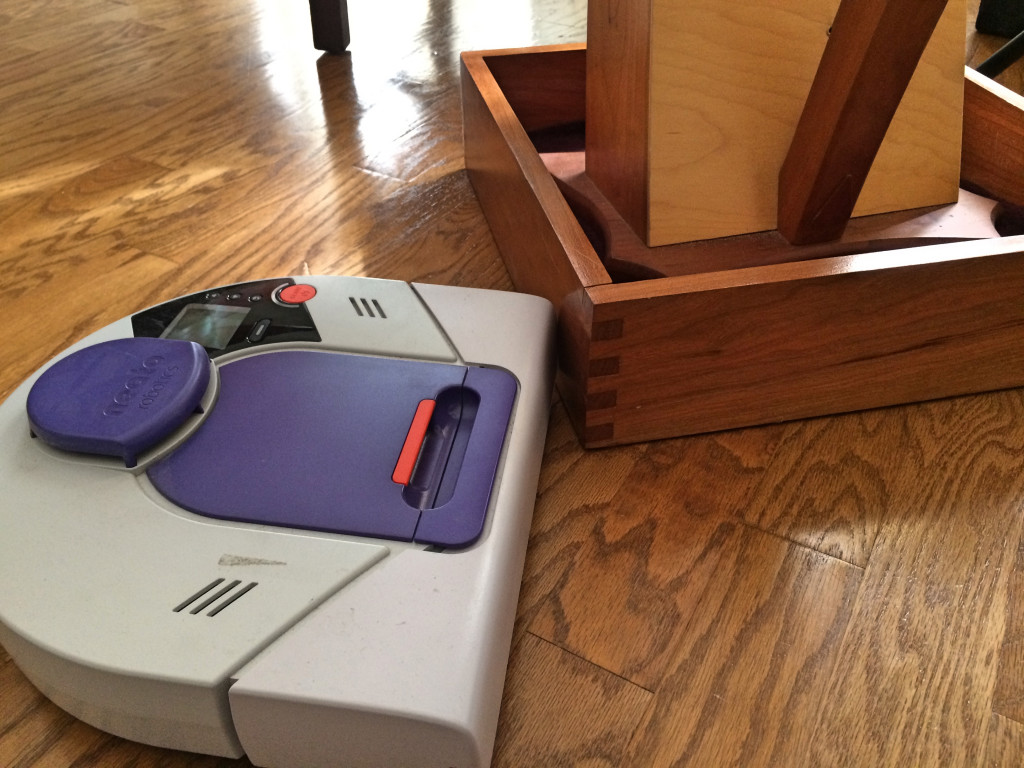This week we will be continuing our discussion of the development of extra pedals (beyond the standard 7) on the concert grand double action pedal harp. Just when you felt like you could wrap your brain around 8 pedals… we come to the rarely discussed and little known 9th pedal!
From last time:
Two weeks ago we discussed the swell pedal, it’s creation, and use. After doing some research for this weeks article I found two more resources that support the extended creation and use of this pedal!!
These two diagrams show just how standard this 8th pedal was!!
And then there were 9…:
Even more rare than seeing a harp with a swell pedal is finding one with a pedal for dampening. The function of this pedal is to engage or disengage a padded bar that rests against the wire strings, cutting out the natural sympathetic vibrations created by normal playing (as can be seen in the photo to the left).
Believe it or not, instruments with this mechanical addition can actually still be purchased from the Horngacher harp company!! Check out these other pictures of modern Horngacher harps with a dampening pedal:
Horngacher was not the only company employing the concept of a dampening mechanism though. As early as 1924 the Wurlitzer harp company was making harps that included a dampener. Harpist Henry J. Williams, soloist with the Minneapolis Symphony Orchestra endorsed this additional pedal saying: “..this latest invention puts the harp where it rightfully belongs, on an equal with the piano.”
Use of the dampening pedal:
Spanish harpist Nicanor Zabaleta is undoubtedly the harpist who employed this mechanical addition to it’s fullest concert potential. His Horngacher harp was fitted with this specially designed 8th pedal, and is the instrument he used in all of his Deutsche Grammophon recordings. Check out this recording by Zabalete of the first movement from the Dussek Sontata… perhaps if you didn’t know that he was performing on a harp with a dampening mechanism this recording wouldn’t strike you as very different from many others of it’s kind. But, with this knowledge I believe that the recording takes on a new life… listen to how clean the sound of the recording is. This recording was made in 1958 and (to me) the sound is cleaner than any modern recording I have ever heard.
Have you ever seen one of these harps before? I don’t know about you… but I am truly interested in the possibilities of this type of mechanical addition. Comment below with your experiences and check and be sure to check back in 2 weeks for the final installment of “When 7 pedals just isn’t enough!”
Happy harping!!





